Helmed by Dr Michelle Chia, Ezra Clinic specializes in Female Aesthetics and provides a holistic approach to your Feminine Beauty and Wellness.
Scar removal treatments are one of the most commonly sought after treatments in my women’s skin clinic.
Scars form on our skin as a body’s response to skin trauma and inflammation. Common causes for this include acne (acne scars), skin trauma (keloid scars) or surgery (post-surgical scars).
The treatment of each different type of scar differs and needs to be specially curated according to the type of scar you have.
Choosing the right type of treatment for the right type of scar will allow scar removal treatments to be performed more effectively.
Having years of experience in women’s aesthetic skin issues, let me share the most effective treatments for scar removal in Singapore.
Acne scar treatment
Acne scars are one of the most common problems that trouble both men and women, regardless of how old you are. Most of us either suffer from scarring due to acne breakouts in our younger teenage years, or some women also suffer from adult or hormonal acne.
When not treated properly, these acne breakouts can pose a risk of leaving scarring which can lead to depressed or indented scars on our face. This can definitely affect the self confidence of many people.
With many spas or beauty salons pushing treatments that claim to treat acne or acne marks, the truth is that acne scar treatments require the expertise of a medical professional, and is usually a long process.
Acne scar treatments need to be tailored according to the person’s skin type as well as the type of acne scarring they are experiencing. Experienced doctors will know how to tailor and recommend the right treatment process for your scars.
While many people usually attempt to use over the counter treatment methods or try out a variety of beauty products claiming to treat scars, doing the wrong treatment for the scars will only worsen the problem and cause more damage.
Here is a list of the different types of medical treatments available for acne scar treatment.
Treating acne scars require a multi modal approach and a combination treatment is usually recommended. The right combination will be decided for you after a detailed consultation with the doctor.
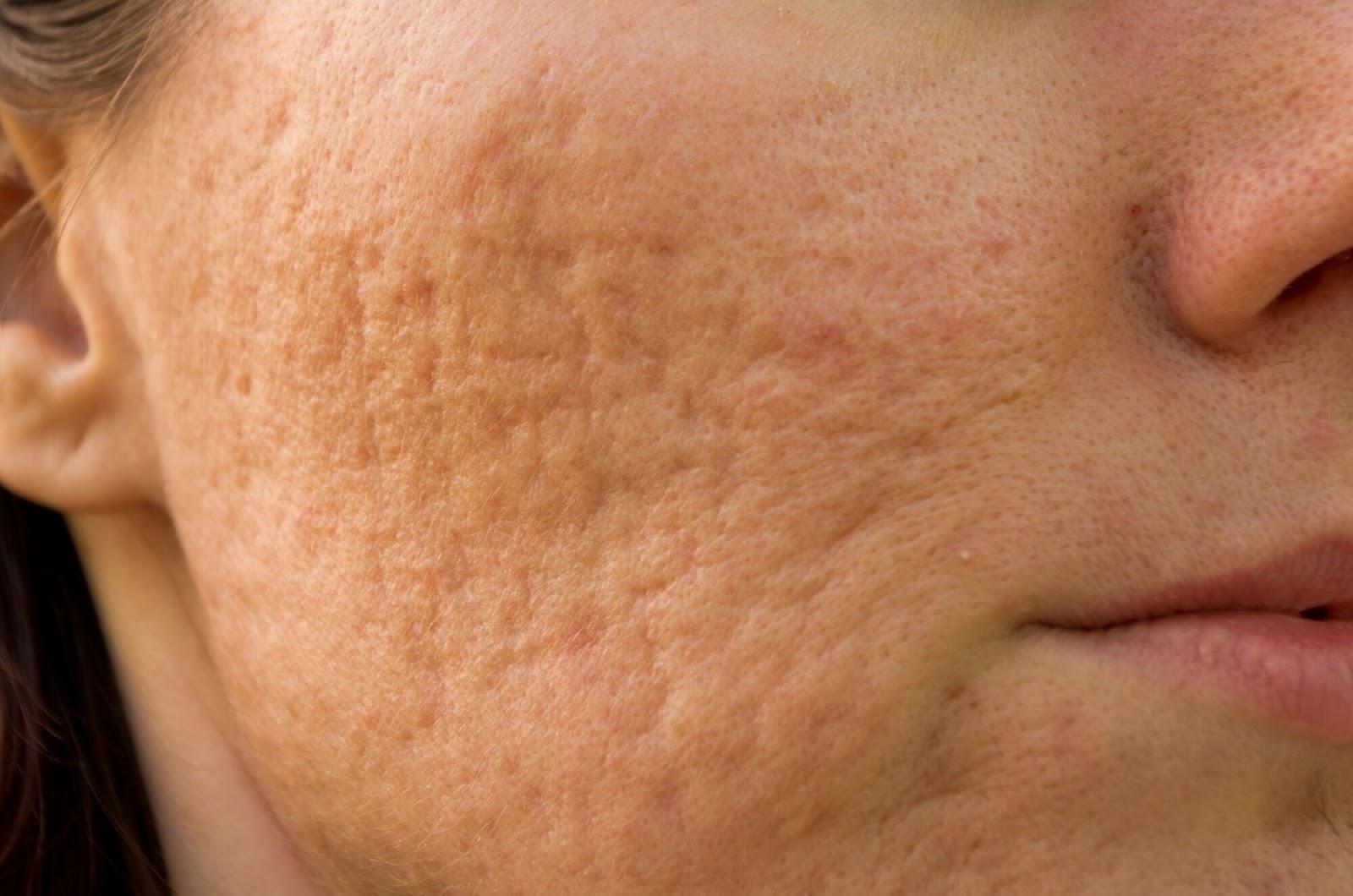
1
Subcision
Subcision is a useful treatment for types of deep scars that are tethered down. Subcision involves using a tiny needle to free up or “release” the fibrous bands of tissue that are holding the scar down in the dermis layer of the skin. This allows the indented scars to become shallower. Multiple sessions of subcision are usually required to achieve the desired result.
Subcision can also be combined with other treatments like Polynucleotides Skin Booster or Dermal fillers for enhanced improvements to acne scars. These treatments help to stimulate skin repair, cell renewal and collagen support for your skin during the scar healing process. This helps to ensure long-lasting improvements to the acne scars.

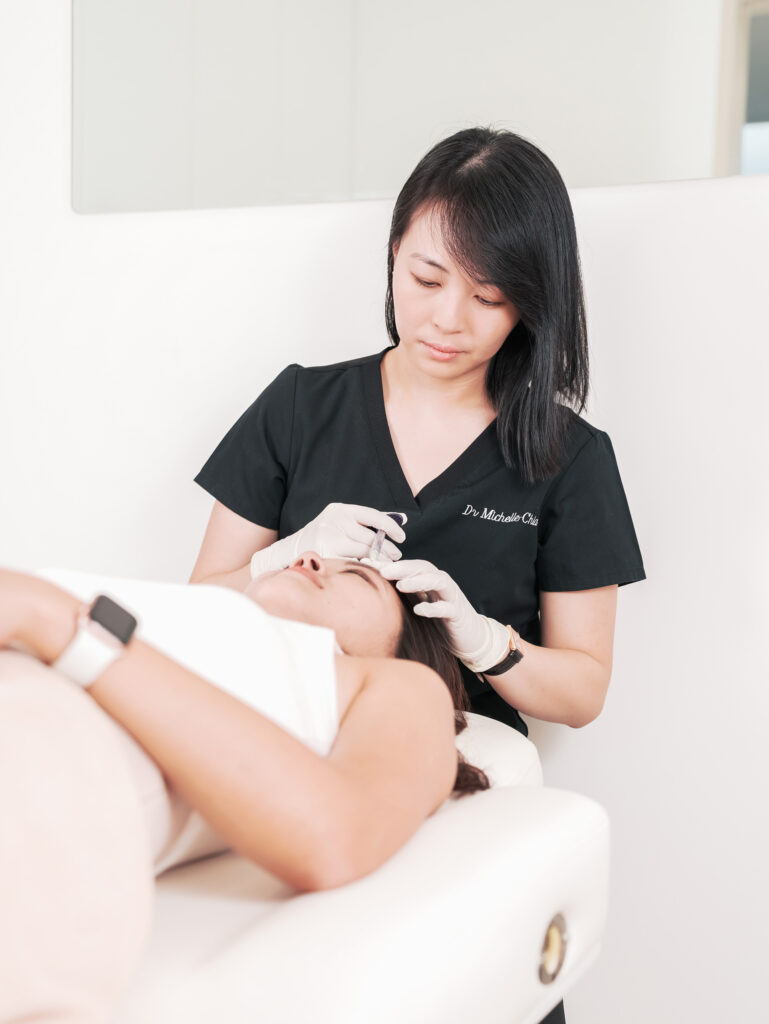
2
Polynucleotides Skin Booster
Polynucleotides Skin Booster is an injectable polynucleotide skin booster. This makes it an excellent product for skin repair, renewal and rejuvenation.
Polynucleotides Skin Booster S is specially created to treat scars such as acne scars. This helps to plump up the scar as well as stimulate new skin growth to reduce the deep and uneven appearance of the scar.
3
Fractional resurfacing laser
Fractional Lasers are used for resurfacing the top layer of your skin.This causes microdamage to the skin which helps to stimulate skin cell growth and regeneration. As such, fractional lasers are useful for treating concerns like superficial scars, pores and fine lines.
If your scars extend into the deeper layers of your skin, you will need lasers or energy based devices that can deliver energy into the deeper layers of your skin.

How much improvement can I get from acne scar treatments?
The amount of improvement that you can expect to see after depends on several key factors.
Firstly, the severity or depth of your acne scars affects the amount of improvements that you can expect. Patients who suffer from more extensive or deeper scars will require more treatment sessions to achieve the desired results. Individual results will vary according to their body’s response to the lasers and treatments as well as your skin’s healing abilities.
Secondly, the extent of improvement per session depends on how many types of synergistic treatments you undergo in each treatment session. For example, combining treatments like fractional lasers with subcision will allow you to see better improvements compared to just doing one type of treatment like resurfacing lasers alone.
Thirdly, post-treatment aftercare also plays an important role in the extent of improvement you see in your scars. Using good quality recovery masks that contain antioxidants and growth factors can help to improve your skin’s healing and hence your result. Post-treatment care is often neglected and this might be one of the reasons why you are not getting the results that you are expecting.
Common pitfalls in acne scar treatment
It is important to understand the key fundamentals for an effective acne scar cure.
Firstly, there is no single treatment that can perfectly improve all types of acne scars. Most people suffering from acne scarring usually have a mixture of different types of scars on their face. The common types of acne scars include: ice pick scars, box-car acne scars and rolling scars. Each type of scar is best treated with a different modality, and you will most definitely need a combination of remedies to precisely treat each form of acne scar.
Ezra Clinic invests heavily in updating and improving our arsenal of acne scar treatments to provide a comprehensive and flexible approach to get rid of your acne scars.
Secondly, multiple treatment sessions are needed to improve your skin effectively. Acne scars form as a result of chronic inflammation and skin damage, and the treatment of any scars will require many treatment sessions to work towards improving your skin each time. This is because scar remodelling takes time. Your skin also requires several treatment sessions to stimulate sufficient collagen production to yield visible results.
Can old acne skin injuries be treated?
Yes, every acne discoloration can be improved, even old skin injuries that formed more than decades ago.
However, old scars are definitely harder to treat. More treatment sessions are usually required in order to achieve the desired results as compared to newer scars that have been formed recently.
In fact, we have a significant number of patients who successfully treated their acne scars that were formed more than 10 years ago.
Is acne scar treatment painful?
Acne scar remedies are well-tolerated by most patients.
At Ezra Clinic, we use one of the highest grades of topical anaesthesia (numbing creams) to ensure that our patients tolerate the treatments well. Most patients only feel mild discomfort during and after the procedure.
Keloid scar treatment
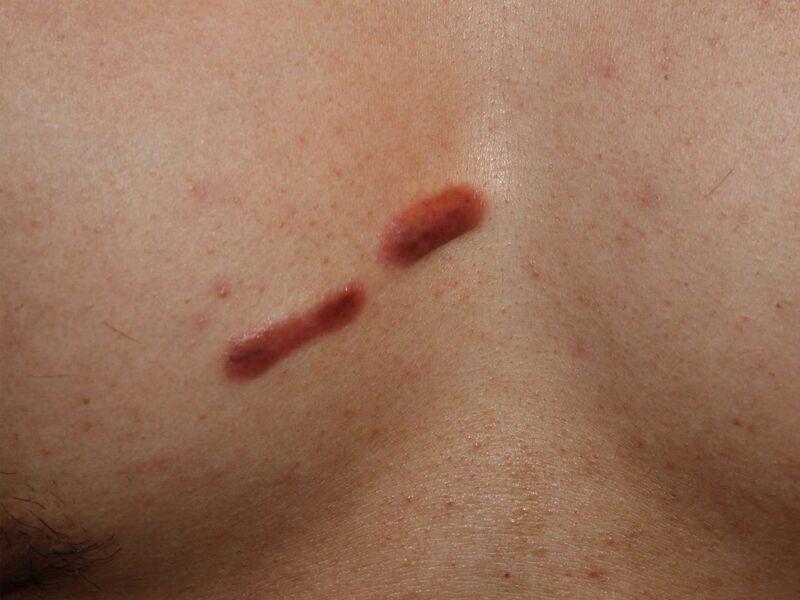
What are keloids?
Keloids refer to the hard growths that appear on our skin after a previous skin injury or trauma. This is also known as hypertrophic scarring.
When skin is injured, our body heals by forming fibrous scar tissue over the wound to repair the injury.
In certain individuals,the scar tissue grows excessively and can be larger than the original wound.
The result is formation of a thickened scar, known as a keloid.
Keloids are most commonly found on the chest, shoulders, earlobes, and cheeks.
Keloids usually have the following characteristics:
- a localized raised area that is flesh-colored, pink, or red
- scar that continues to grow larger with scar tissue over time
- itchy patch of skin
Keloid scars may take weeks or months to develop fully.
While keloids are harmless, it may sometimes cause discomfort, tenderness, or possible irritation depending on the location. In rare instances, you may experience keloid scarring on large areas of your body. The hardened scar tissue may restrict your movements.
The most common side effects of keloids are usually cosmetic in nature.
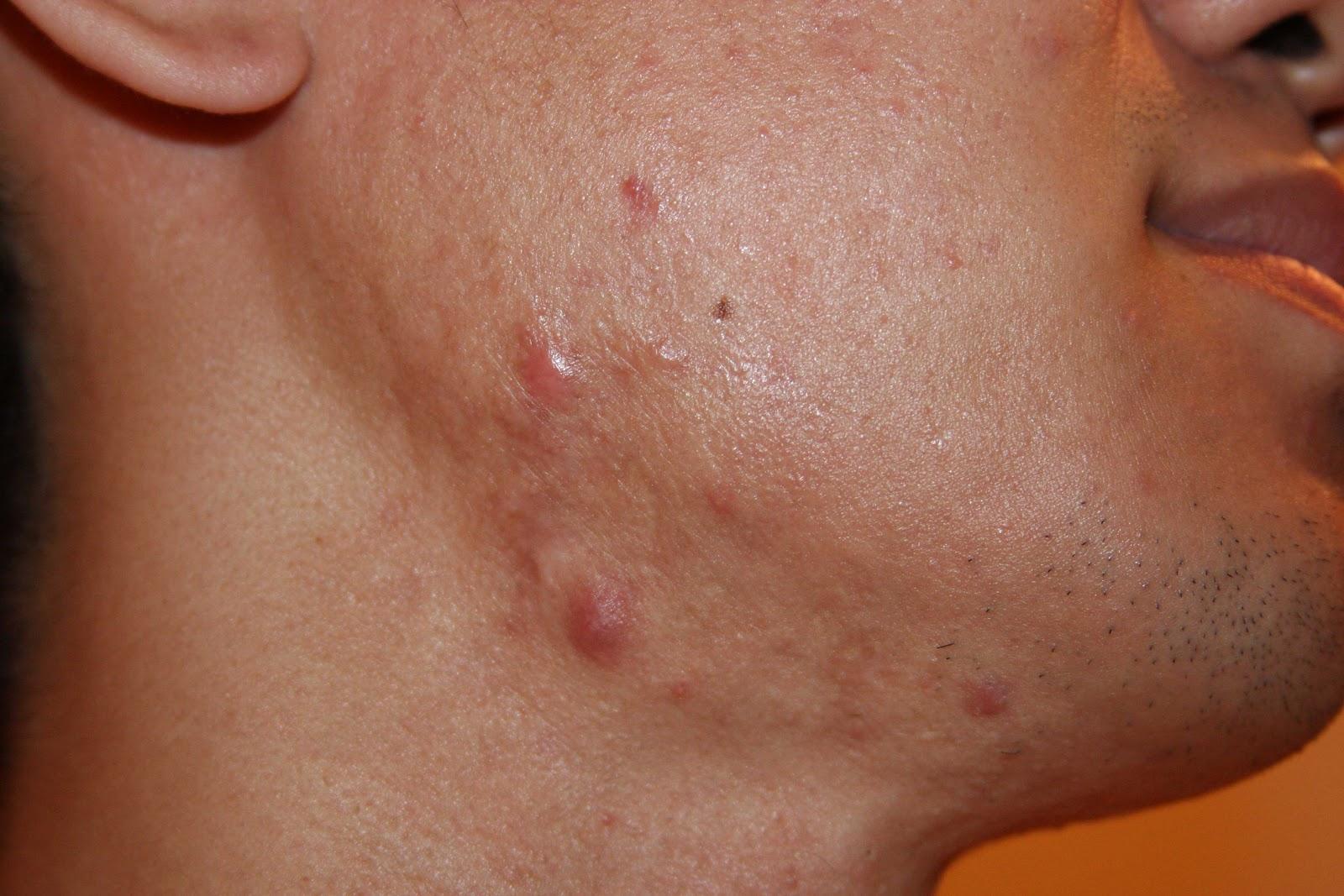
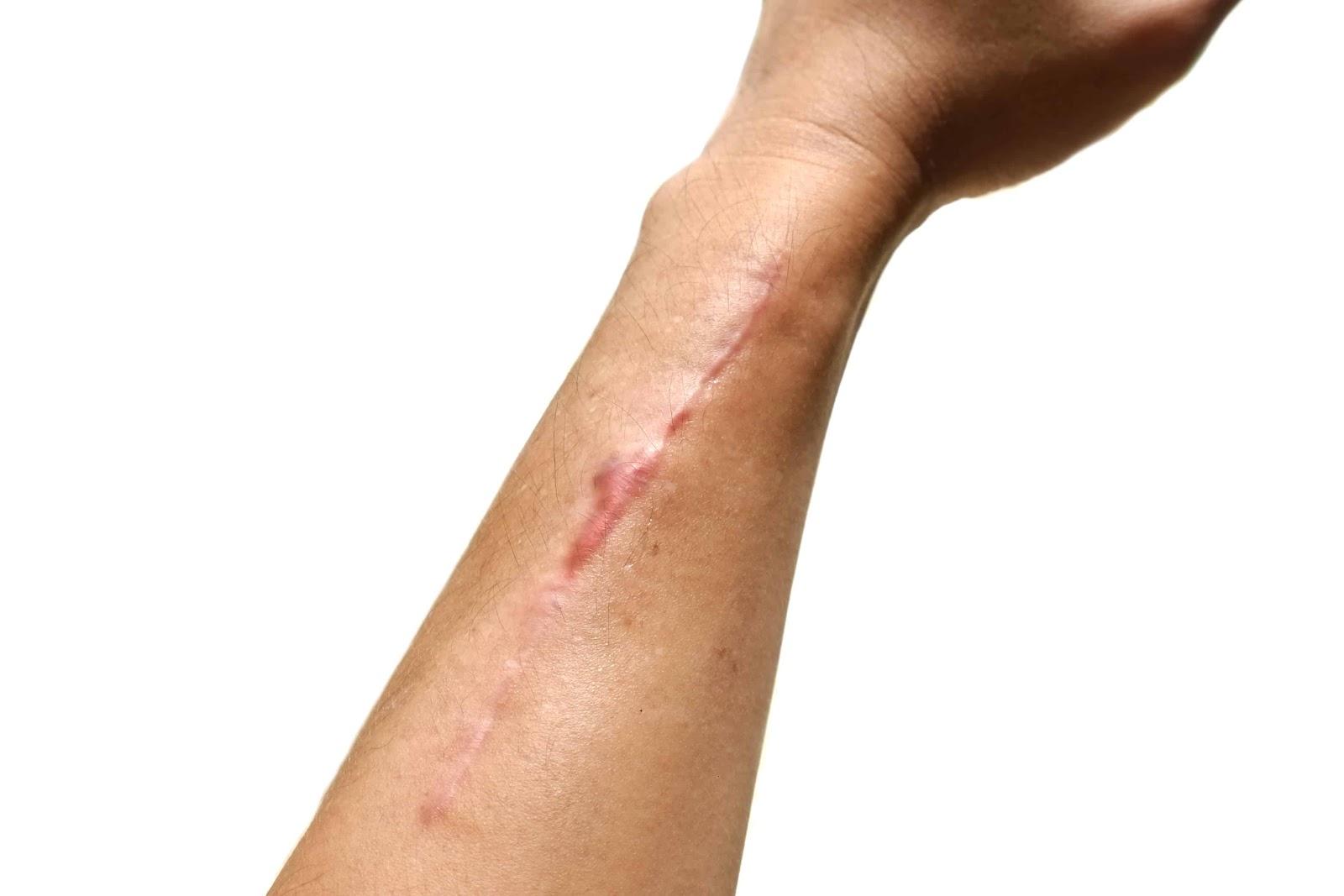
What are the causes of Keloids?
Most types of skin injury can contribute to keloid scarring.
These include:
- acne scars
- burns
- ear piercing
- surgical incision sites
- vaccination sites
Keloids are more common than you imagine, with an estimated 10 percent of people who experience keloid scarring.
Who tends to get keloids?
People with darker pigmented skin are more prone to keloids.
Other risk factors of include:
- Family history of keloid or hypertrophic scarring
- Personal history of keloid formation
- being of Asian descent
- being pregnant
- being younger than 30
What are the keloid scar removal treatment options in Singapore?
Corticosteroid Injection
Corticosteroid injection is the most common treatment for keloid scars.
Steroid injections are injected into the keloid to help to shrink the scar.
A series of injections once every 3 to 4 weeks is usually required, with 4 sessions in total required on average.
The first injections tend to relieve symptoms and make your keloid feel softer.
Between 60% – 80% of keloids shrink after being injected.
Laser Keloid Removal Treatment
This can reduce the height and fade the color of a keloid. It’s often used synergistically along with other types of treatments like a series of corticosteroid injections.
Keloid surgery
Surgical removal of keloids carries the risks of recurrence of keloids.
Nearly 100% of keloids return after this treatment.
To reduce the risk of a keloid returning after surgical removal, other treatments are required to be done as well eg. corticosteroid injection or cryotherapy.
Is Keloid treatment painful?
Most patients can tolerate the keloid treatments well.
Prior to injections or lasers, we will apply numbing cream to minimize your discomfort.
Need help with your keloid scars? Speak to us now for a customized treatment plan!
Keloid removal treatment in Singapore
Here are some tips for you to find a value for money keloid removal treatment in Singapore.
- Find a doctor who has the full set of injections and lasers for keloid removal treatment.
- Look for a detail-oriented doctor. Every keloid is different – find a doctor who doesn’t miss these fine details.
- Chemistry. There are many good doctors who specialize in keloid removal treatment. Find one that you are comfortable with!
Post-surgical scar treatment
Caesarean section scars are one of the most common types of surgical scars seen in women.
Having previously worked in one of the biggest women’s hospitals in Singapore,I have seen, and also created many C-section scars.
Other types of surgical scars include Abdominal surgery scars such as appendix surgery scars.
I will discuss in this article some ways to reduce scarring post-operatively.
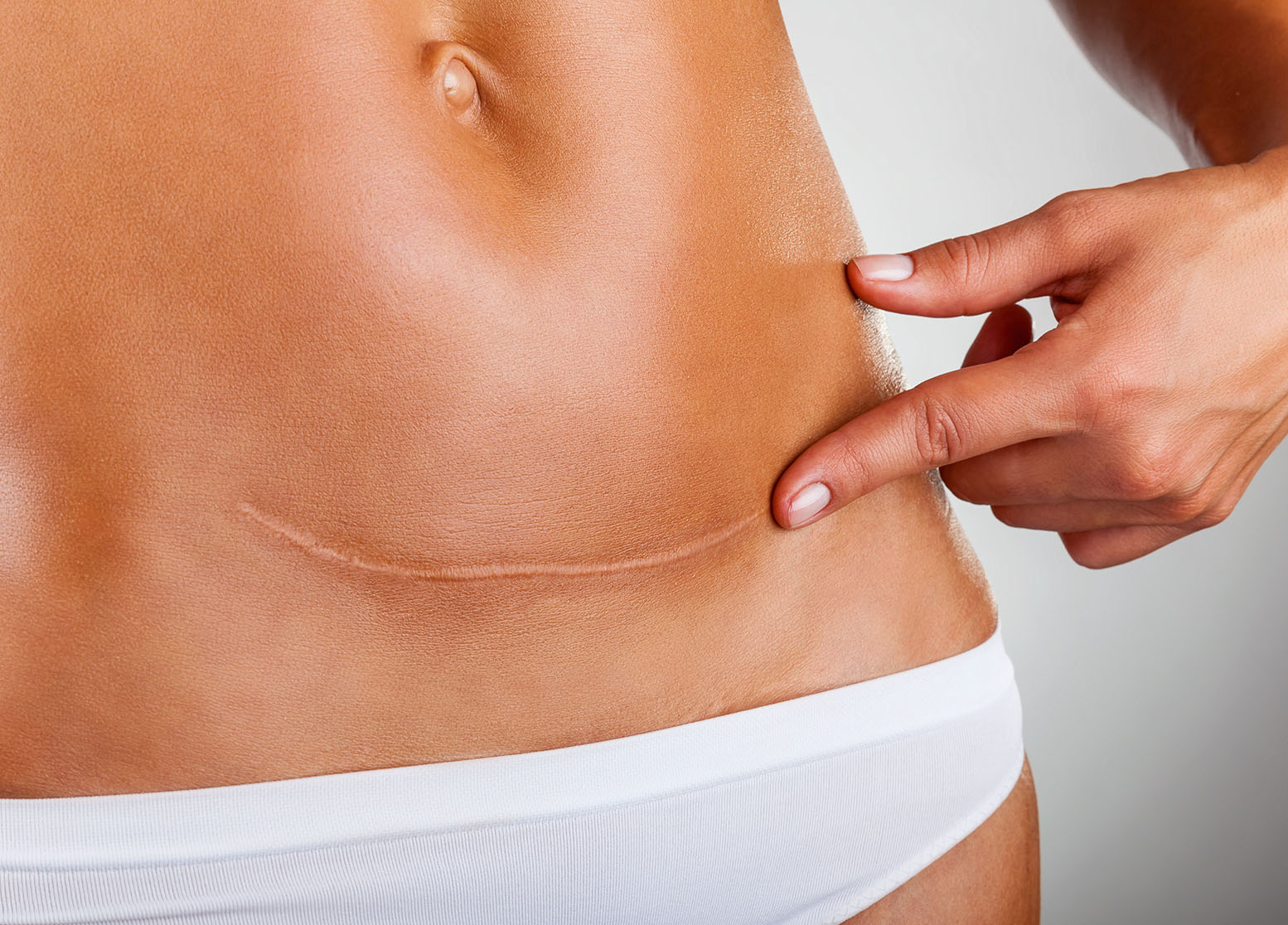

What is a Caesarean Section Surgery Scar?
A scar from a caesarean section is typically a horizontal scar that is located around the bikini line region.
Caesarean section scars can have various types of appearances ranging from a keloid scar, to hyperpigmentation to an atrophic scar.
It is important to understand how a scar forms to appreciate why some scars appear the way they do.
When there is an area of injury, the natural healing process involves scar formation. Scar tissues consist of collagen fibres, but lack elasticity and are of poorer quality as they are typically aligned in a single direction. .
Different types of scars form depending on how and how much collagen is laid down, which is affected by age, gender, skin colour, genetics, size, depth and location of injury.
Different types of scars require different types of treatment.
Uneven surfaced scars
1
Atrophic scar
An atrophic scar presents with an irregular texture and indentation over the affected area. This usually presents together with a post-inflammatory hyperpigmentation surrounding the scar. To treat such scars, collagen stimulating skin boosters such Polynucleotides Skin Booster can be injected into the sunken area and the colour can be improved with pigment lasers such as Pico lasers. Other treatments like fractional Radiofrequency treatments can be used to induce micro-trauma that will promote collagen remodelling.
2
Hypertrophic scars
These are raised scars confined to the area of injury. The overproduction of collagen causes the raised scars as a consequence to prolong healing time, wound infection or closure of wound under excessive tension. To treat these scars, ablative lasers, such as Co2 lasers, can be used to smoothen the raised surfaces and make the scars less noticeable.
3
Keloid scar
The worst scar to have and one of the most challenging to treat is a keloid scar. A keloid scar grows beyond the boundary of injury and can continue to grow even years after the initial injury. The safest treatment would be intralesional steroid injections into and surrounding the edges of the scar. Any other treatment that involves breakage of the skin e.g. in ablative lasers or surgical removal of the scar would be creating a new injury, which may eventually worsen the original appearance.
Depending on the type of scar, the recommended treatment will vary. These treatments can be expensive and will usually require repeated treatments for best results. In the most extreme scenario, one might consider undergoing scar revision, usually by excising the scar or performing plastic surgery techniques.
Uneven coloured scars
When a scar tissue is formed, the overproduction of melanin can lead to a hyperpigmented scar. This is known as Post-inflammatory Hyperpigmentation (PIH).
Treatment options for PIH include topicals like Vitamin C, antioxidants, retinol, or chemical peels to increase the skin turnover and decrease the overproduction of melatonin. The effects of topical agents usually can only be seen after consistent use over months. Pigment Lasers like Pico lasers can also be done concurrently to achieve a more synergistic effect. Lasers work by breaking down existing melanin to lighten the hyperpigmented scar.
How to minimize C-section scars?
1
Wound care
Preventing infection is key in the initial stages of wound healing. This is especially important for a c-section wound, as the site of the wound can be hidden in the folds of the abdominal skin. This usually creates a moist and warm environment which can promote bacterial growth and increase the chances of a wound infection.
You should watch out for early signs of wound infection and seek medical attention early. Some of the symptoms include excessive pain around the wound, warmth or redness around the wound or foul smelling yellowish discharge.
2
Dressings and topical silicone
It is common practice that a pressure dressing is applied after C-section to prevent scar dehiscence and minimise tension on the wound. After which, silicone creams and dressings are widely available over the counter at the local pharmacy.
Price of C-Section Scar Removal Treatment in Singapore
The cost of surgical scar removal treatment varies depending on the severity of the scar. For more information, please schedule a consultation.
Not sure which other treatments you need to lighten your post-surgical scar?
Allow us to help you
AUTHOR
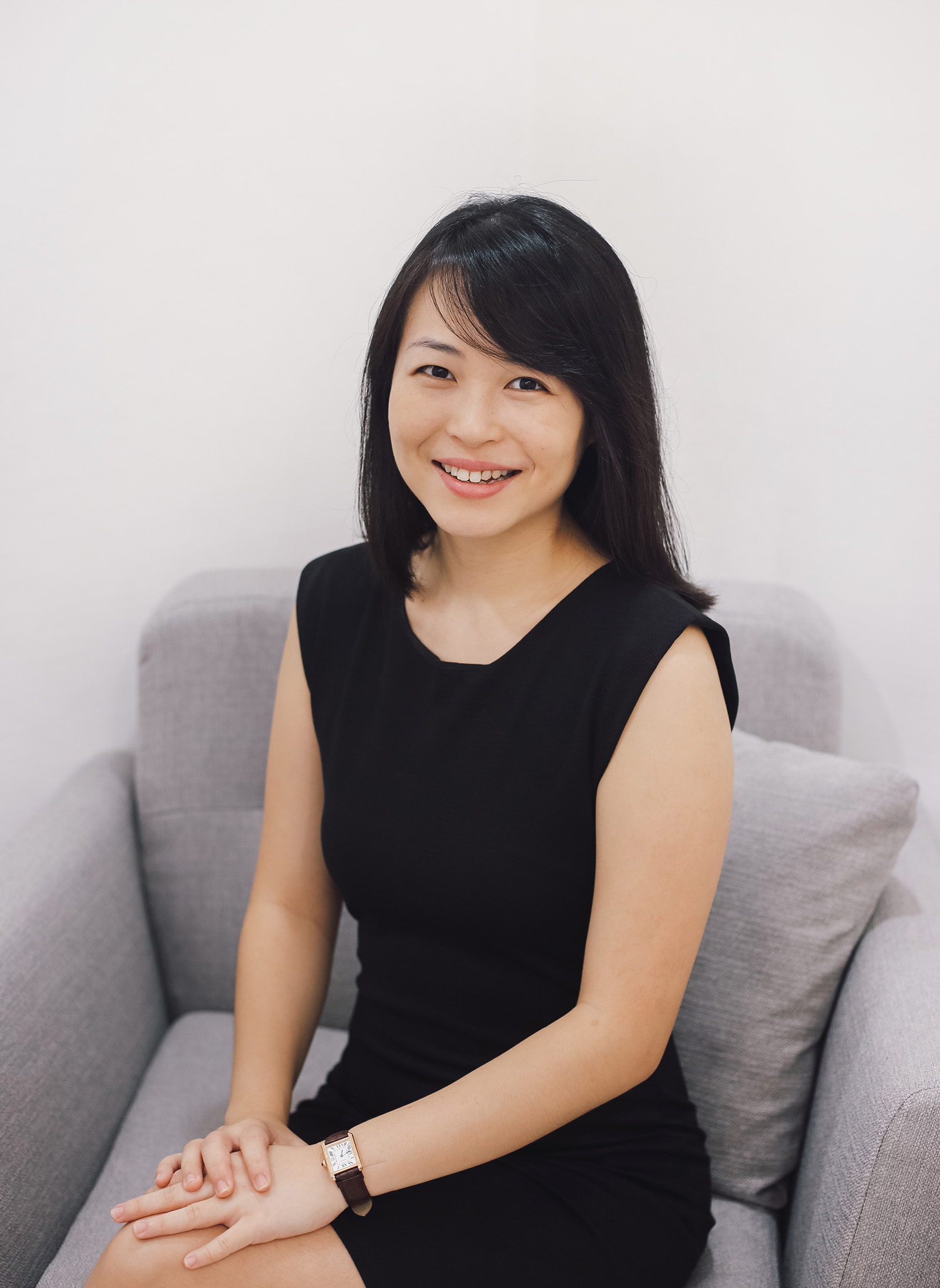
Dr Michelle Chia
Medical Director
After graduating from the National University of Singapore, Dr Michelle's journey allowed her to train in Women's Health and Aesthetic Medicine. Her experience has led her to be featured on multiple media platforms including Radio Stations and prominent Magazines like Her World, Women's Weekly and CLEO. Her work has also received recognition both locally and internationally in several Medical Conferences.
Ezra Clinic is a Women’s Health, Wellness and Aesthetic Clinic that is conveniently located at the top floor of Royal Square Medical Suites in Novena, Singapore’s Medical Health Hub.
Helmed by Dr Michelle Chia, Ezra Clinic is your chosen one stop clinic for all your Women’s Health and Wellness needs.
Address
101 Irrawaddy Road #21-09, Royal Square Medical Centre, Singapore 329565


